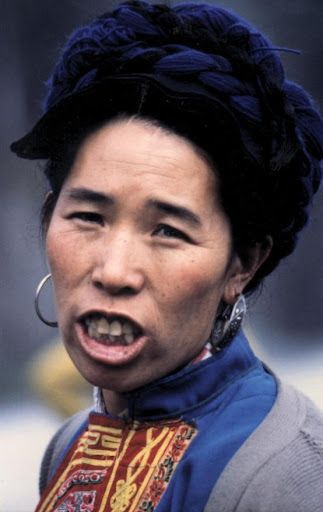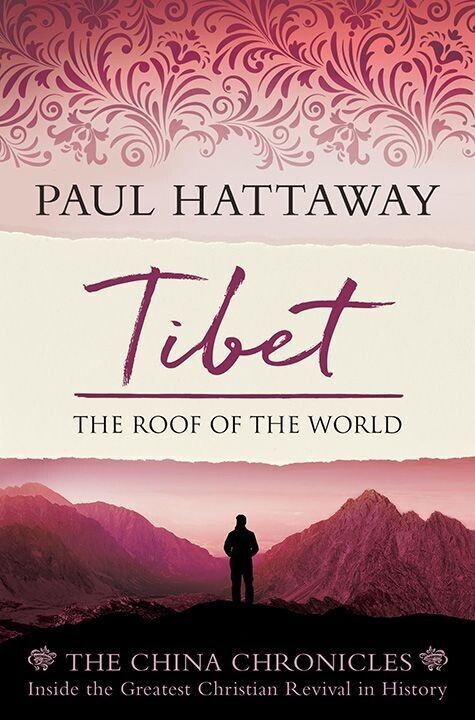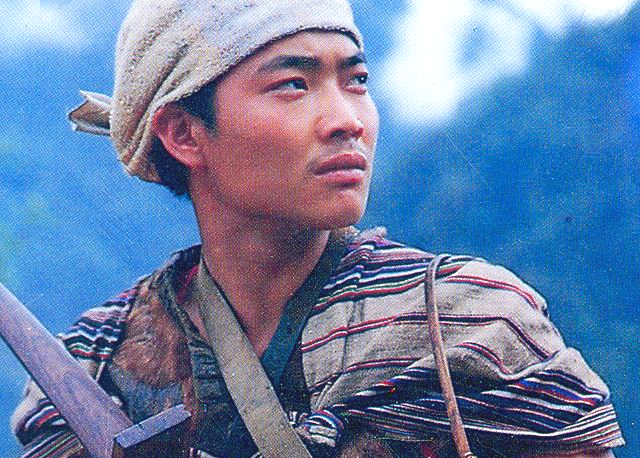The Jiarong

The Khampa Tibetans share their region with many other ethnic groups, including 250,000 Jiarong, who are distinct from Tibetan people on account of their vastly different language, dress, and customs. The Jiarong inhabit isolated areas in western Sichuan, and consider Mount Gongga (Minya Konka in Tibetan), an imposing 24,790 feet (7,556 meter) high, to be their spirit-queen and protective guardian.
Most Jiarong people who live in strongly Tibetan areas have adopted Tibetan Buddhism as their religion, while others share the polytheistic beliefs of their Qiang neighbors. Overlaying the Jiarong worldview is a belief in the ancient Bon religion, and their communities contain many Bon temples.
For countless centuries the Jiarong have inhabited isolated valleys within the vast Aba Prefecture in northwest Sichuan Province. Before the Communist takeover of China in 1949, the Jiarong were distributed among 18 small kingdoms that were virtually inaccessible to the outside world. Today, the Jiarong have five subgroups with significant dialect differences. This separation appears to have come about after a war in the 1760s, when the 18 kingdoms were divided into five colonies by the queen of the Jiarong.
The history of Christians trying to reach these fascinating people has also fallen outside the scope of normal Tibetan mission efforts. Evangelicals first engaged the Jiarong in the early 1900s, when the American Baptists and the Border Mission of the Church of Christ in China set up bases in the area, but mission work among the Jiarong was dominated by just one exceptionally tough man, Huston Edgar of New Zealand.
The Demise of the Jiarong Work
The missionaries among the Jiarong were shocked by Edgar's death in 1935, but they soldiered on, vowing to continue building on the solid foundation that had been laid by the New Zealander. After an exploratory journey through the Jiarong region, Howard Jeffrey wrote: "The doors are open! Chogschi, with a population of 10,000 Jiarong families, is wide open to us and we are informed we could rent a property there if required."
Despite the hopeful outlook, mission work among the Jiarong reached its peak during Huston Edgar's life, and it gradually eroded after his death. In 1934, some sources had listed 34 Jiarong believers, but many subsequently fell away from the faith after the vicious Communist invasion. Many thousands of Jiarong were slaughtered by the Red Army, and the survivors were left deeply traumatized. It is estimated that up to two-thirds of the Jiarong population perished in the brutal carnage.
The missionaries didn't give up, however, and continued to share the gospel. In 1935, Howard Jeffrey and Norman Amos reportedly befriended a key Jiarong lama, who gladly received Tibetan gospel books from the missionaries and offered to teach them Tibetan.
Three years later, in 1938, Jeffrey reported that he had made contact with a Jiarong prince who had formerly been kindly disposed toward Edgar. Jeffrey hoped that "his sympathy would do much to smooth out difficulties inherent in gospel advance among the Jiarong people."
Alas, reports from the Jiarong missionaries gradually ceased, and the work came to an end long before the Communists officially expelled missionaries from the region. One source lamented: "Social ostracism of possible converts, and persecution to the extent of the placing of severe curses by the lamas, or poisoning through family members, were other hindrances to spreading the gospel."
Recent Efforts to reach the Jiarong
After six decades of no known Christian work among the Jiarong, at the start of the 21st century a Chinese house church mission once again attempted to take the gospel to the Jiarong. They found a number of receptive people, and a small fellowship emerged. Almost immediately, however, the lamas rose up in opposition. The Christians were severely beaten and persecuted, and the Han Chinese missionary was jailed for a time, before he went missing. No one knows if he died or returned to his home province, but the fledgling Jiarong church was decimated.
On May 12, 2008, a massive earthquake struck the Jiarong region, centered on the town of Wenchuan. A total of 88,000 people from various ethnic groups were killed, with another 18,000 missing and presumed dead. Thousands of homes were destroyed, and many Jiarong went into eternity without ever having heard the gospel of Jesus Christ.
Today, it is thought there are a very small number of Jiarong Christians, but they are scattered across a wide area and have little or no fellowship with one another. The courageous and sacrificial efforts of Huston Edgar and others have yet to bear lasting fruit among the Jiarong, but the King of kings has not forgotten them, and the day will surely come when the Name of Jesus Christ is glorified among this unique and precious group.
After such prolonged hardship, the last part of Ding's life could scarcely be imagined. He married a Christian widow, and when his criminal record was erased, he procured a passport and was able to visit the United States in the late 1980s at the invitation of some of his former missionary friends. He finally went to his eternal reward in the 1990s.
© This article is an extract from Paul Hattaway's book ‘Tibet: The Roof of the World’. You can order this or any of The China Chronicles books and e-books from our online bookstore.
1. John Ting with David Woodward, Welcome the Wind: Witness of a House Church Pastor, The Secret of Survival in a Rough World (unpublished manuscript, 1990), p. 70.
2. Ting with Woodward, Welcome the Wind, p. 74
3. Ting with Woodward, Welcome the Wind, p. 113.
4. Ting with Woodward, Welcome the Wind, pp. 113-14.
5. Ting with Woodward, Welcome the Wind, p. 120.
6. Ting with Woodward, Welcome the Wind, p. 122.
7. dc Talk and The Voice of the Martyrs, Jesus Freaks: Stories of Those Who Stood for Jesus, Vol. 2 (Minneapolis, MN: Bethany House, 2002), p. 271.
8. Ting with Woodward, Welcome the Wind, p. 130.
9. David Woodward, "Examining a Significant Minority: Tibetan Christians," The Tibet Journal (Winter 1991), p. 65.
10. Ting with Woodward, Welcome the Wind, p. 130.
11. Ting with Woodward, Welcome the Wind, p. 155.





